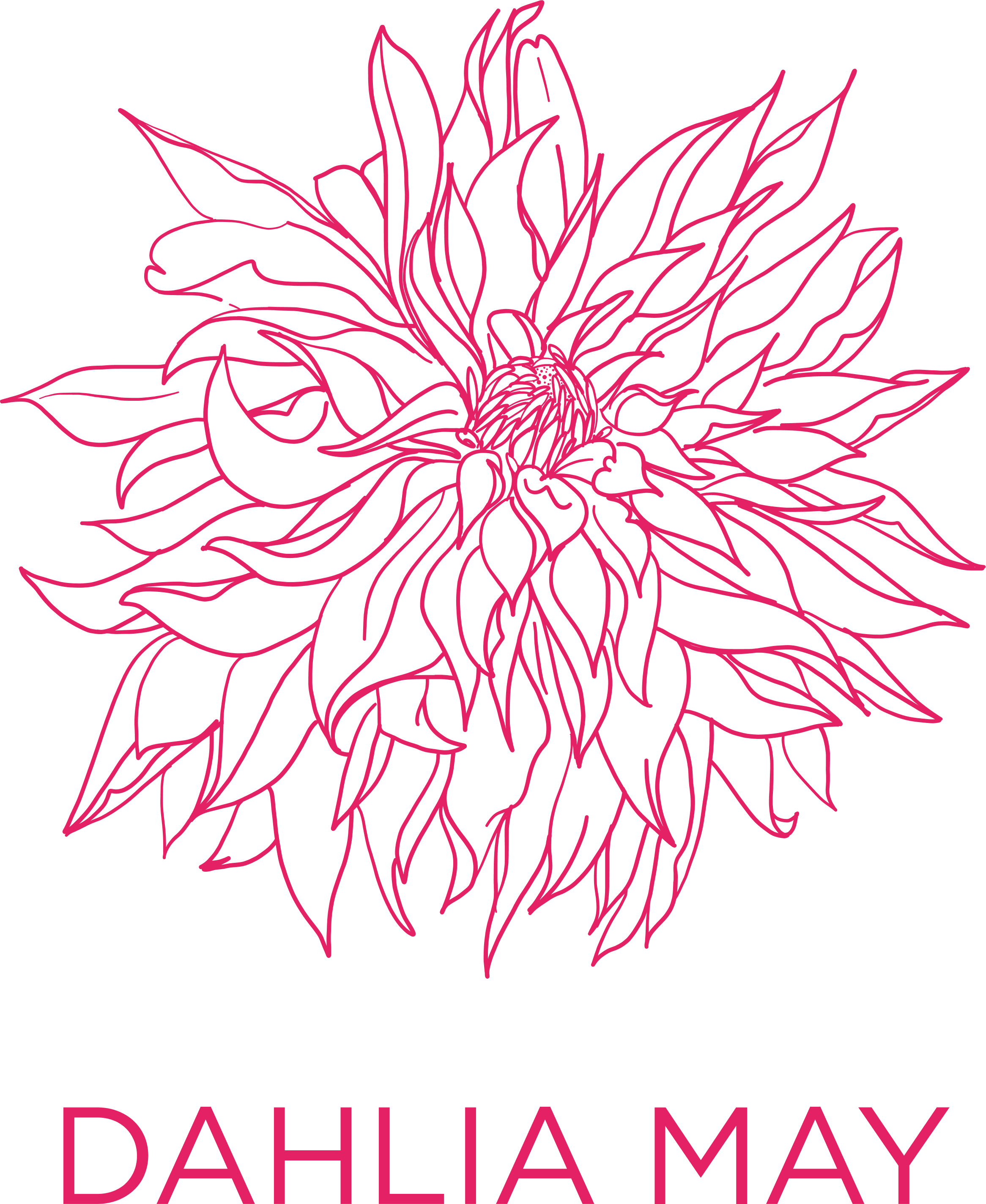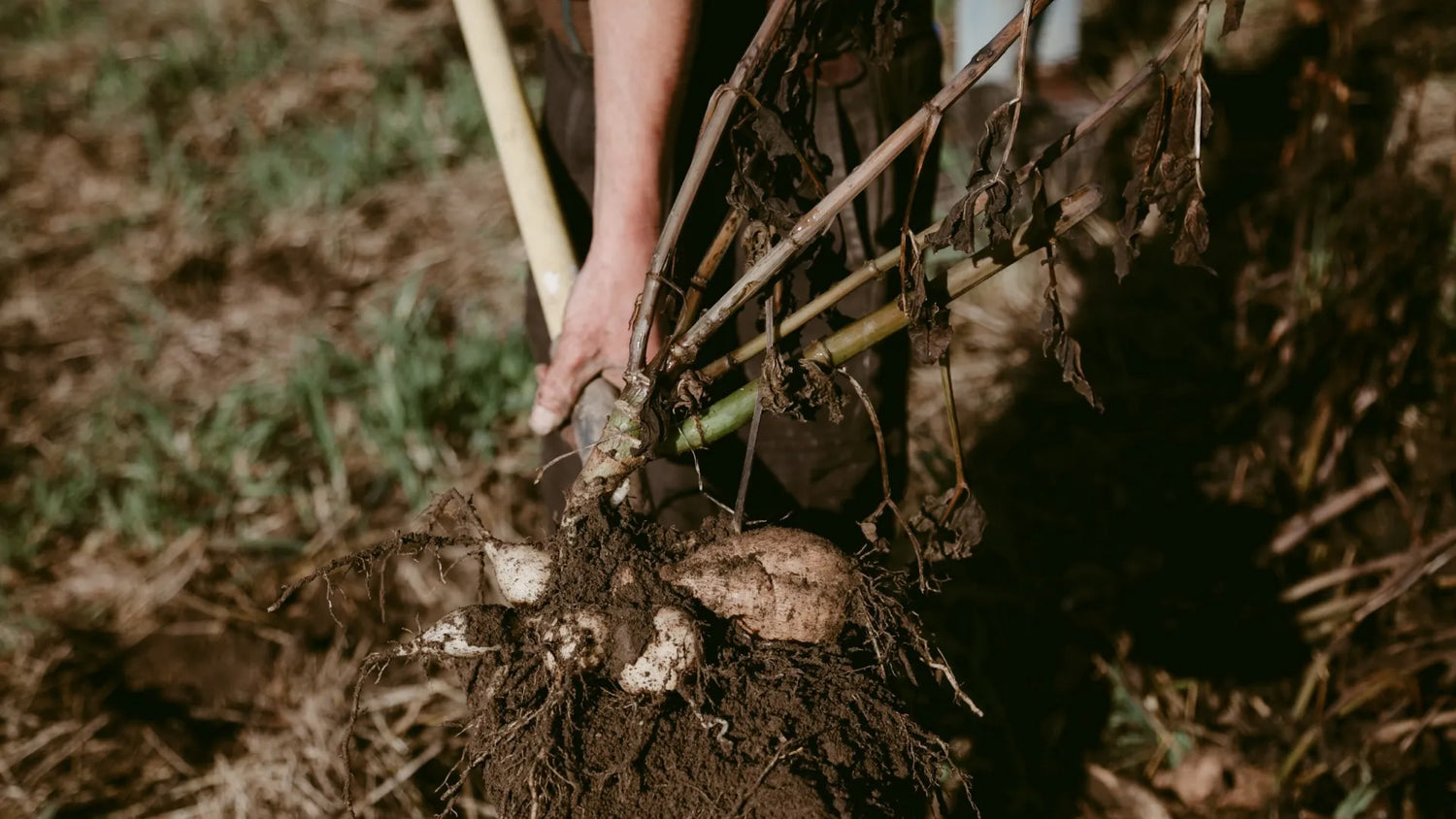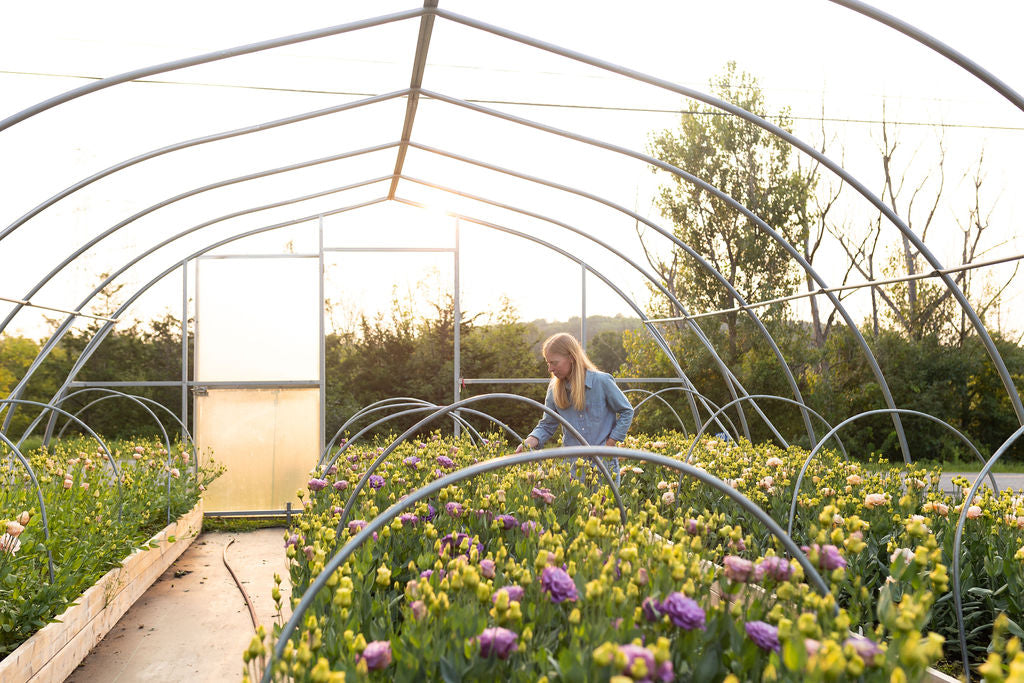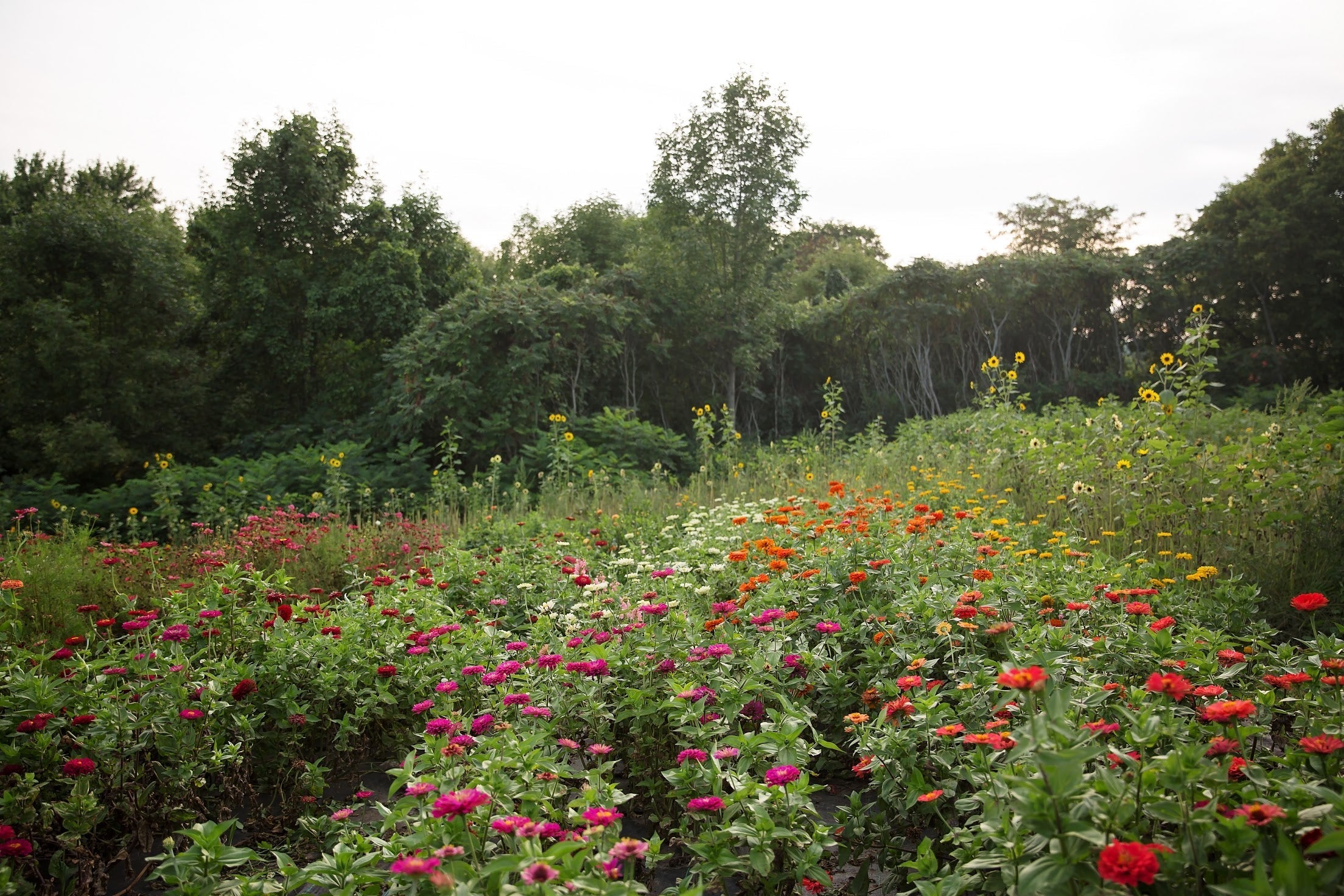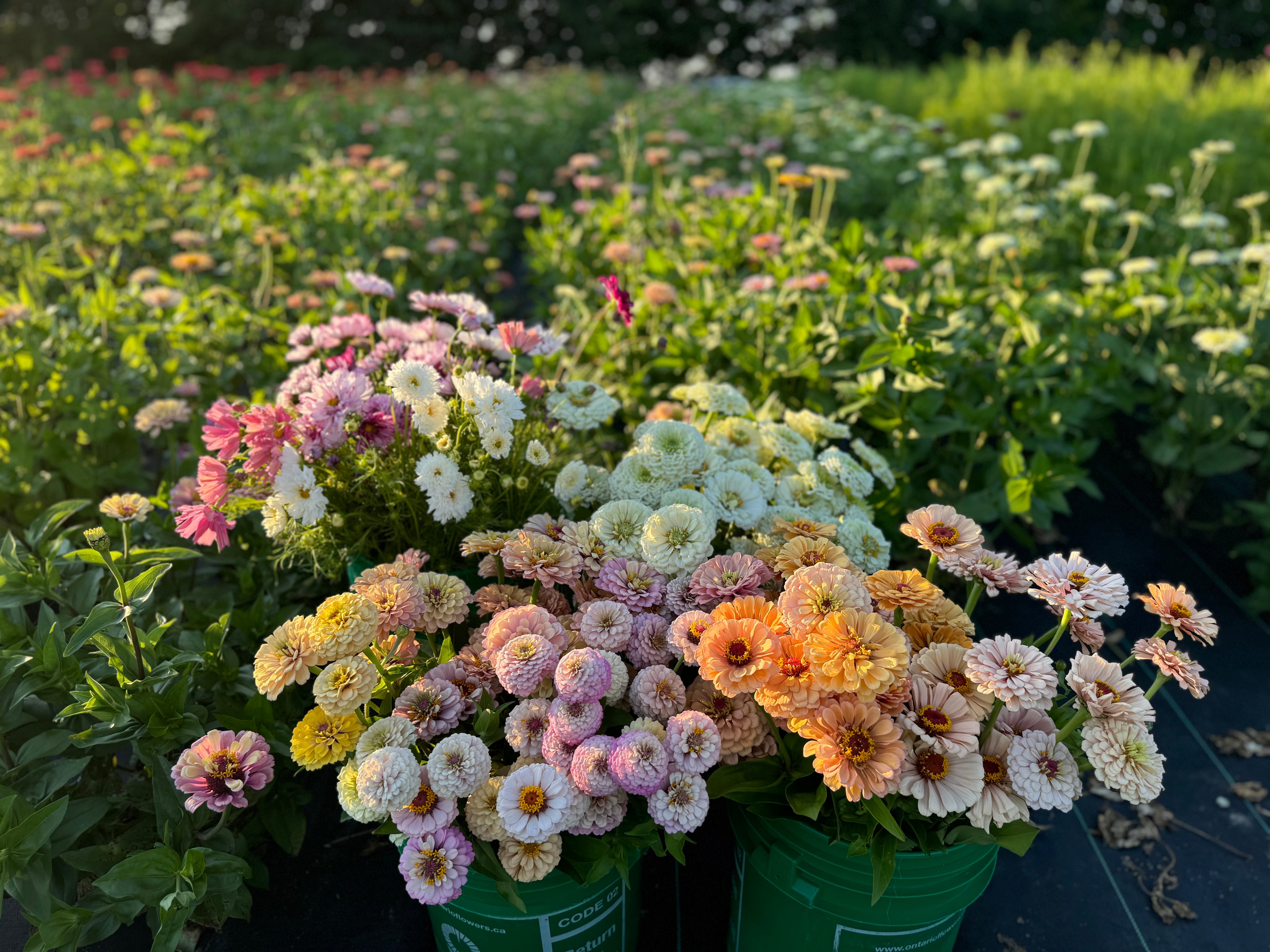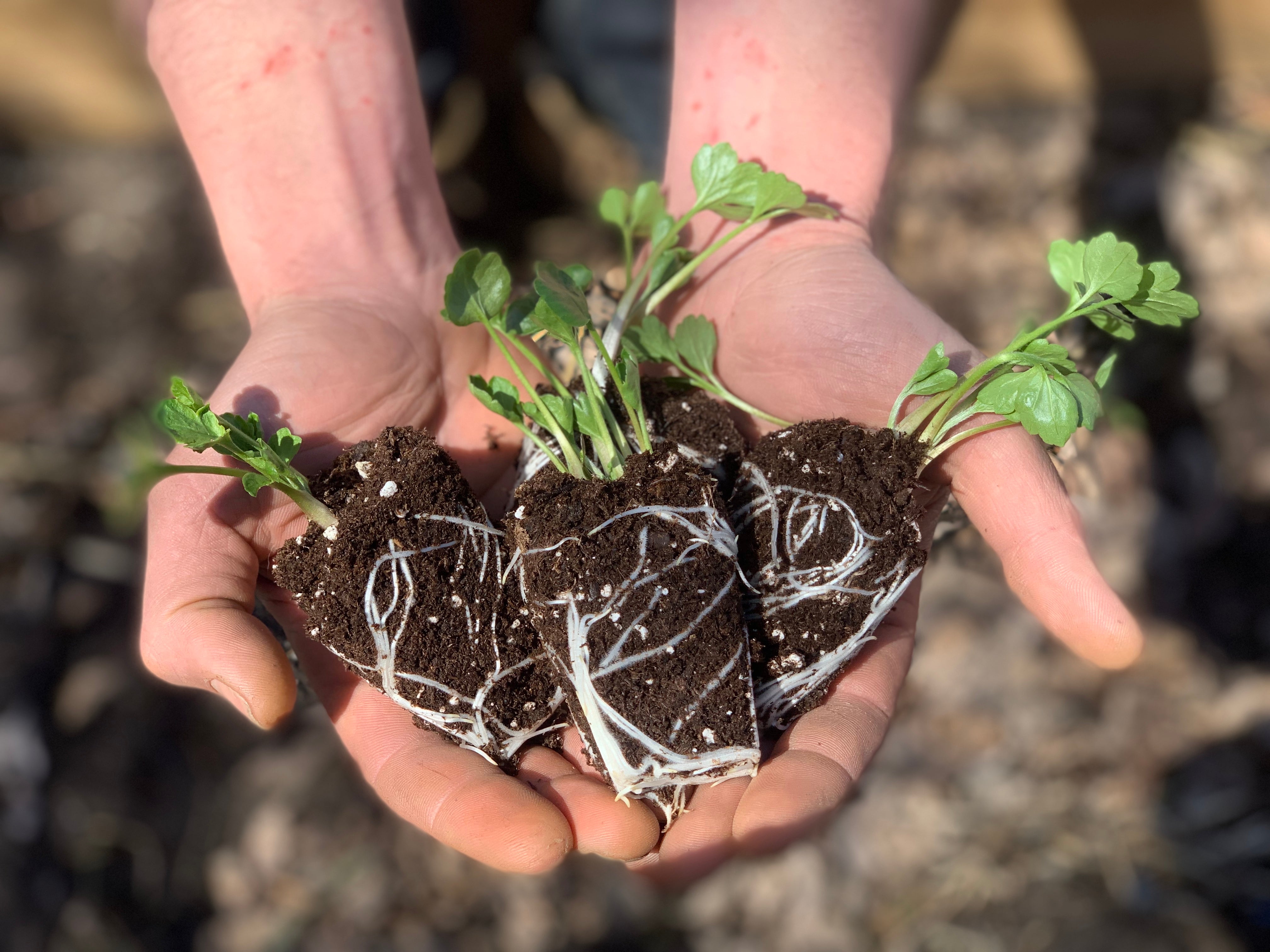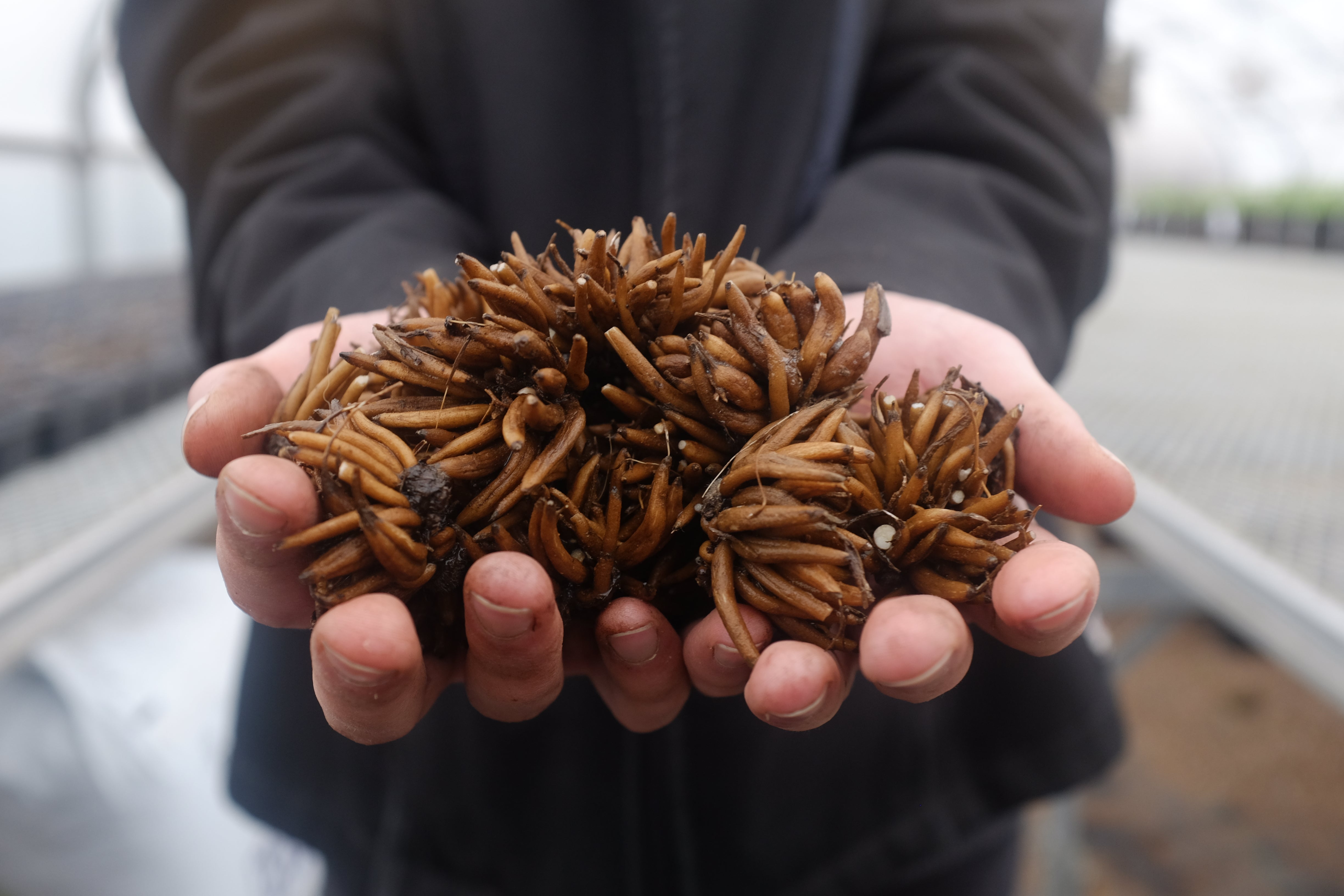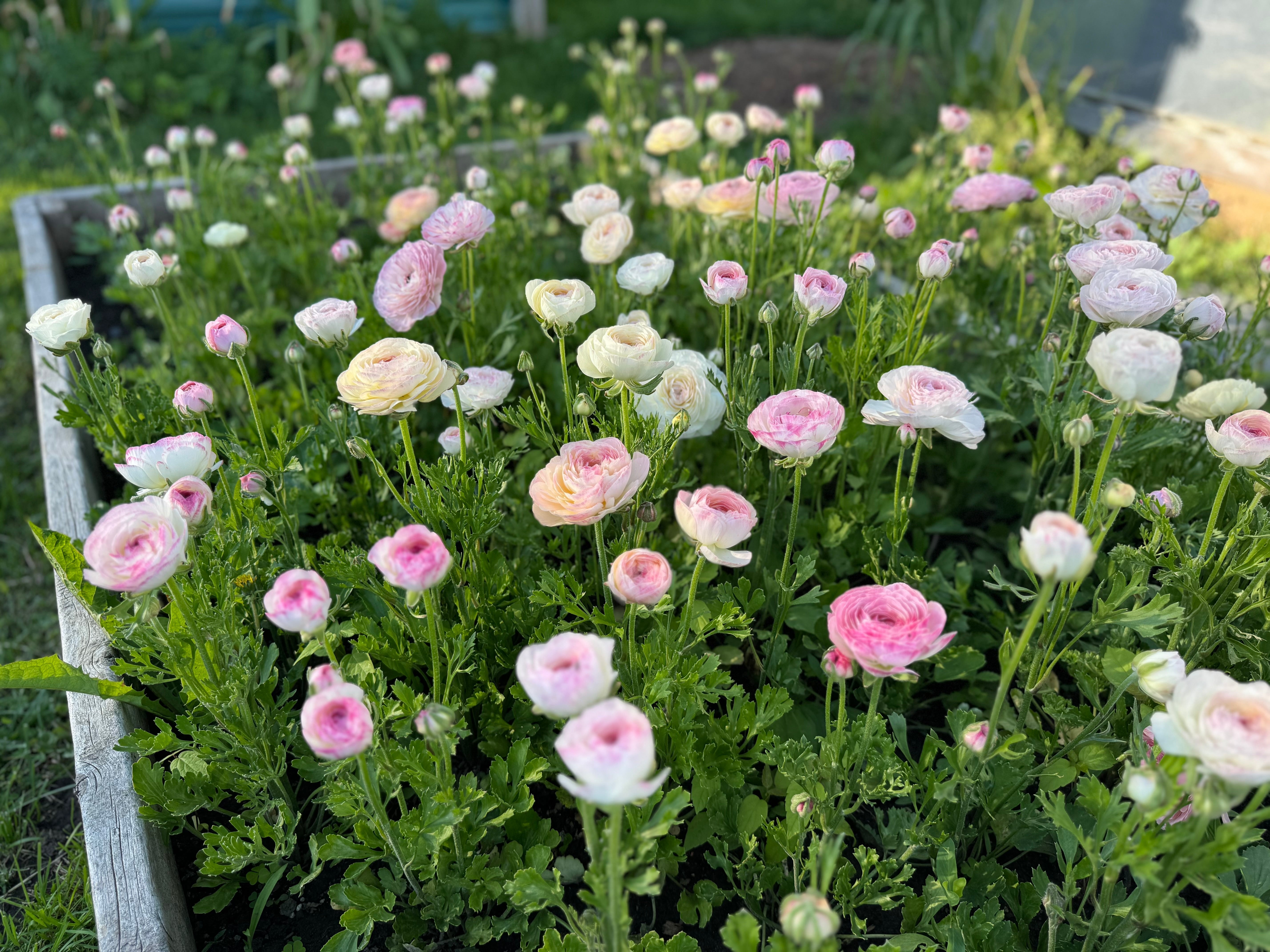After an abundant summer of blooms, you might be wondering what the next steps are in saving your Dahlia tubers to grow again next year. As much as we wish we could leave our dahlia tubers in the ground every year, unfortunately that isn’t the case for most of us. In USDA gardening zones eight and higher you CAN leave your tubers in the ground in the fall, and they will survive the winter. In USDA gardening zones seven and lower dahlia tubers must be dug up out of the ground in the fall and stored indoors for the winter. Not sure which USDA gardening zone you are in? Find out HERE.
When is the best time to dig up your dahlias?
Your dahlia plants will continue to grow until you receive your first killing frost. Here in our growing zone five, in south eastern Ontario, that frost typically arrives anywhere between mid September and mid October. While it can be tempting to try to get ahead of fall chores and dig your tubers out before a frost, we recommend waiting for the frost. The longer the tubers are left in the ground to cure (without the ground freezing solid), the more fully developed the tubers are. This improves the likelihood of your tubers storing over the winter. Dahlias tubers will continue to grow, and further mature, after a light frost. They can also continue to grow after the first killing freeze (depending on how deep the freeze affects the soil). There is no need to rush getting your tubers out of the ground after a frost, a frost only damages the top of your plant, the tubers in the ground will still be just fine. You will want to make sure to dig your tubers up before your ground freezes; however, if your tubers freeze in the ground then you will lose them.

After your first killing frost (which always turns your plant leaves a blackish-green as the temperatures warm up), your first step in harvesting your dahlia tubers will be to cut back the stems of the plant to just above ground level, and dispose of the tops of the plant in a compost pile or green waste bin. After cutting the tops off of our plants, we typically like to let our tubers sit in the ground for a week or two before we dig them up, to harden them off. If you’re out of time, due to the ground being quite wet or below freezing temperatures, you can go ahead and dig your tubers out as soon as you have cut the tops off the plants. If you do have the time, it’s best to leave the tubers in the ground for an extra week or two (as long as the ground isn’t freezing) for them to cure.
When you’re are ready to dig your tubers, you will want to dig wide and deep around the stem to avoid damaging the tubers. We recommend using a garden fork over a shovel whenever possible —as it’s a little more forgiving and less likely to slice through a tuber—, although a shovel will certainly get the job done as well. Begin to dig at least 12 inches away from the stem of the plant, to minimize the risk of damaging the tubers in the ground below.

What happens if you do end up accidentally cutting through a piece of your tuber as you dig? No need to worry, as long as the neck of your tuber isn’t broken, and it remains attached to the crown of the plant, you can cut up to half of the large fleshly part of the tuber off without damaging the chances of it producing a viable plant the following year.

As you lift your tubers out of the ground, gently remove as much soil as you can, being careful not to break the necks (which are the thin areas between the crown and the plump body of the tuber) of your Dahlia tubers. Damaging, or breaking the necks of your tubers breaks the connection between the tuber itself and its future eyes on the crown, making it likely that your plant will not grow. Digging Dahlia tubers can be a time consuming process because of the extra care necessary to avoid breakage.

If you have pieces of tuber break off the crown of your plant, leaving just a neck attached to a tuber without a piece of crown or an ‘eye’; go ahead and compost them. Without a piece of crown and an eye, your tuber will not sprout again next year. The ‘eye’ (which is found on the crown of the plant) is the part of the tuber that the new plant sprouts from next year. Without an eye, you won’t have a viable tuber.
We do NOT recommend washing or hosing off your clumps of Dahlia Tubers after digging them. Some growers do wash their tubers before storing them away for the winter, and we know that different things work for different people. We can only speak to what works best for us, here at our farm, after 8 years of growing, digging and storing dahlias and experimenting with many different methods. In our experience, storing Dahlia Tubers is very similar to storing potatoes. Both of these starchy tubers do best when stored with the dirt on them, in a cool dark and dry place over the winter. We’ll talk more about best practices for storage, as well as whether to split your tubers in the fall or in the spring, in another post.

Digging and storing Dahlia Tubers certainly involves extra effort, but for that extra effort you’ll be rewarded with many extra tubers and blooms the following spring. The best way to learn is by trying, so don’t be afraid to dig up your tubers and give winter storage a try this fall. We’ll be sharing more resources soon about our best practices for storing your Dahlia Tubers over the winter.
